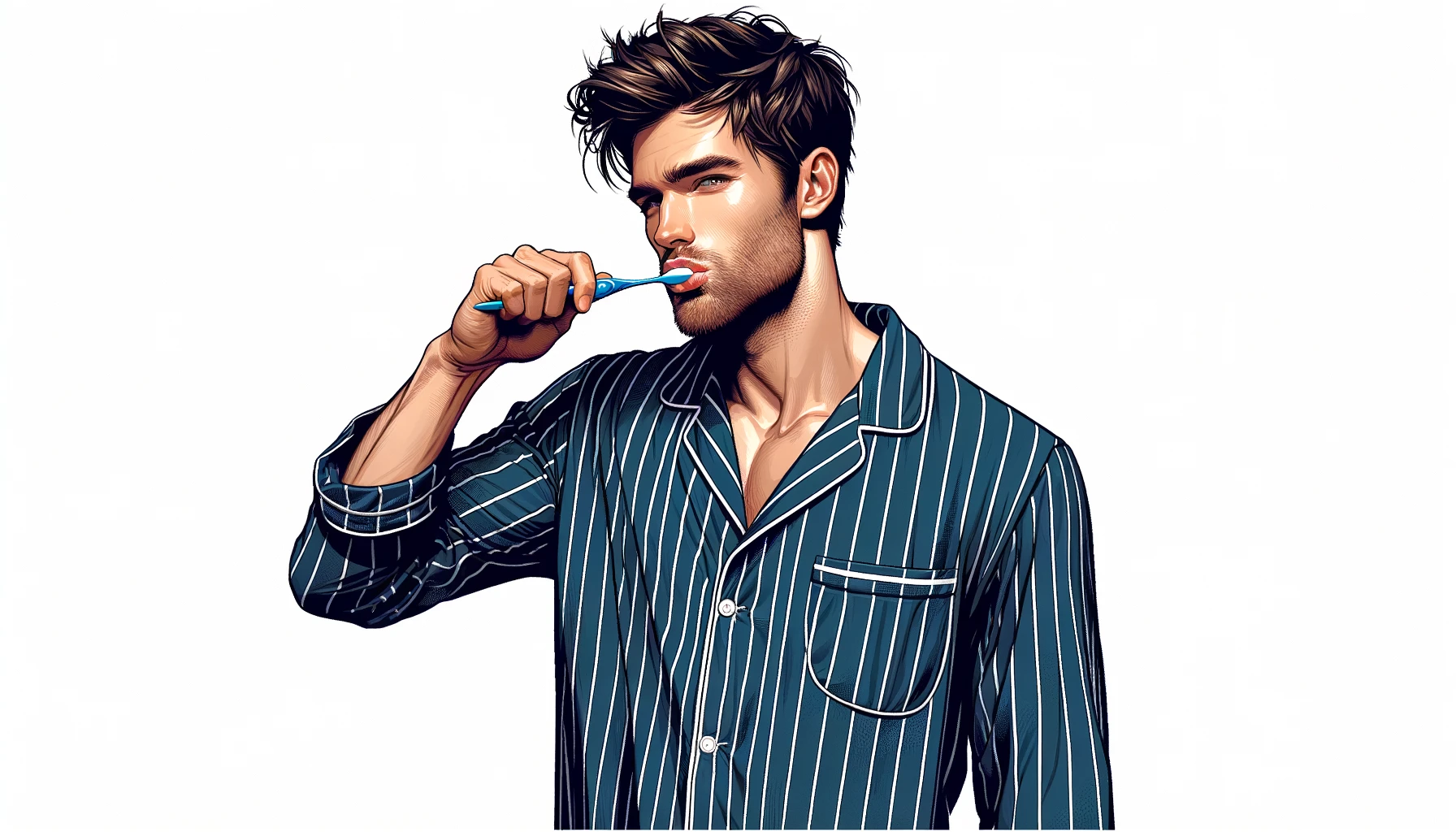Sharing is caring!
Have you ever noticed how some people don’t look their best when they smile?
It might seem strange because smiling is usually a sign of happiness and can make people look more friendly and approachable.
But not everyone feels confident about their smile, and sometimes, they might even think they look ugly when they smile.
In this article, we’re going to explore some reasons why this happens. We’ll look at different things that can affect how a smile looks, from the way our faces move to how we feel inside.
Keep reading to find out more about why smiles can look different from person to person and what makes a smile truly beautiful.
Reasons Why Some People Look Ugly When They Smile

1. Facial Symmetry and Muscle Balance
One common reason lies in the symmetry and balance of our facial muscles. When we smile, a symphony of muscles works together to lift the mouth and eyes.
However, not everyone’s facial muscles are balanced. In some individuals, this imbalance can lead to a smile that seems uneven or distorted.
Think about it: if one side of your mouth lifts higher than the other, it might give off a peculiar look, which some might unfairly judge as less attractive.
Moreover, facial symmetry plays a big role in societal perceptions of beauty. A smile that is not symmetrical can clash with what people typically consider ‘pleasing to the eye.’
It’s not that the smile itself is inherently ugly; it’s more about how our brains are wired to perceive symmetry as a sign of beauty and health.
Furthermore, when these muscle imbalances are pronounced, they can make a smile seem forced or insincere.
A genuine smile, also known as a Duchenne smile, involves both the mouth and the eyes.
If someone’s facial muscles don’t cooperate well, their smile might not reach their eyes, making the smile appear less genuine or even awkward to onlookers.
2. Dental Issues
Another key factor could be dental health or the appearance of one’s teeth.
Discolored, missing, or irregular teeth can significantly affect how a smile is perceived.
For instance, yellow or stained teeth might be perfectly healthy, but they can make a smile look less appealing due to societal standards that favor pearly white teeth.
Additionally, gaps or missing teeth can alter the structure of a smile, creating what some might see as an unattractive look.
It’s important to remember, though, that dental appearance does not reflect someone’s character or hygiene necessarily; it’s just one aspect that can impact the aesthetic of a smile.
Then there’s the matter of alignment. Crooked teeth can change the way the lips frame the smile, leading to what some might consider an ‘ugly’ appearance.
However, it’s essential to understand that these features are superficial and do not diminish the sincerity or joy behind the smile.
3. Self-Perception and Confidence
Self-perception and confidence can make a huge difference in how a smile is presented and perceived.
Someone self-conscious about their smile might hold back, leading to a smile that looks strained or half-hearted. It’s not the smile itself that’s unattractive; it’s the lack of confidence that can dampen its brightness.
Confidence shines through when a person smiles genuinely, lighting up their face and making them appear more approachable and attractive, regardless of so-called imperfections.
On the flip side, insecurity can make a smile seem less inviting or genuine, which others might mistakenly interpret as less attractive.
Furthermore, societal pressure and the fear of judgment can make people overly critical of their smiles, leading to a reluctance to smile fully.
When someone tries to hide their smile, it can come across as awkward or insincere, which is often what people react negatively to, rather than the smile itself.
Remember, the beauty of a smile extends far beyond physical appearance. It’s a reflection of joy, friendliness, and warmth.
While certain factors might influence how a smile looks, it’s the intention and emotion behind it that truly define its beauty.
4. Emotional State and Genuine Happiness

A person’s emotional state can hugely impact the appearance of their smile.
When someone is genuinely happy, the smile spreads across the face, reaching the eyes, and creating what is often called a ‘sparkle.
However, if someone is upset, stressed, or simply faking happiness, the smile can appear tight, forced, or downright awkward.
Genuine emotions are hard to fake, and a smile that doesn’t stem from real joy can seem unappealing because it lacks the warmth and openness of a true smile.
Stress, in particular, can make it difficult to produce a natural smile. When under a lot of pressure, people might smile more with their mouths than their eyes, leading to what’s sometimes called a ‘pan-am’ smile, which can look insincere or strained.
The disparity between the smile and the actual mood can create a visually noticeable dissonance.
Moreover, emotional discomfort can lead to microexpressions that flash across the face for a fraction of a second before the smile. Observers might not consciously register these fleeting expressions, but they can leave an impression of insincerity or discomfort, making the smile seem less appealing.
[Read: Are Dimples Attractive On A Guy?]
5. Cultural Differences and Social Norms
Cultural perceptions and social norms play a significant role in how smiles are interpreted.
In some cultures, open and broad smiles are seen as a sign of friendliness and warmth, while in others, they might be viewed as inappropriate or a sign of frivolity.
For individuals from a background where subtlety in expression is valued, a wide smile might not come naturally and can appear awkward or forced when it does occur.
Furthermore, what constitutes a ‘beautiful’ smile can vary greatly from one culture to another.
For example, in some Eastern cultures, slight smiles that don’t show teeth are considered most appealing, while in many Western cultures, big, toothy grins are the gold standard.
Individuals who have grown up with different cultural standards may find their smiles are perceived differently in new environments.
Social norms also dictate when and where it’s appropriate to smile, influencing how smiles are received.
A smile in a context where seriousness is expected, for example, can be misinterpreted as insincerity or disrespect, affecting the perceived attractiveness of the smile.
6. Age and Health
As people age, their smiles often change. The skin loses elasticity, and muscles may weaken, affecting how a smile looks.
Wrinkles, which are a natural part of aging, can alter the way a smile is framed on the face, sometimes leading to expressions that are perceived as less attractive or vibrant compared to those of younger individuals.
Health issues, particularly those affecting facial nerves or muscles, can also impact the symmetry and appearance of a smile.
Conditions such as Bell’s palsy, which causes temporary paralysis of facial muscles, can make a smile appear lopsided or incomplete.
Dental health issues, beyond just the appearance of teeth, can affect how comfortably a person can smile.
Moreover, general health and well-being influence the vibrancy and liveliness of a smile.
Fatigue, illness, or malnutrition can sap the energy from a smile, making it seem less lively and more forced. A vibrant smile is often a sign of good overall health and vitality.
7. Personal Insecurities and Past Experiences
Personal insecurities and past negative experiences can deeply affect how someone smiles.
If individuals have been teased or criticized for their smile in the past, they might become self-conscious about smiling openly in the future.
This self-consciousness can lead to smiles that look constrained or awkward because the person is holding back their natural expression.
Insecurities about one’s appearance, such as perceived flaws not just in teeth but in other facial features, can also lead to restrained smiles.
People might try to cover up certain aspects of their face while smiling, leading to an unnatural, forced expression.
Past experiences, such as trauma or embarrassment associated with smiling in public, can condition someone to associate smiling with negative outcomes, leading to hesitance or discomfort when smiling later on.
[Interesting: What Is More Attractive, Attached Or Detached Earlobes?]
How to Stop Looking Ugly When You Smile

1. Find Out What Specifically Makes You Look Ugly When You Smile
Identifying the specific aspects of your smile that you’re not happy with is the first step to improving it.
Is it because your smile is uneven, or maybe your teeth aren’t as white as you’d like?
Once you know what’s bothering you, it’s easier to address it. You might find that your concerns are common and fixable.
Ask for feedback from people you trust, like close friends or family. Sometimes an outside perspective can provide insights that you might not have considered.
But remember, the goal here is not to criticize but to understand and improve.
Consider taking photos or videos of yourself smiling. This can help you see your smile from a different perspective and pinpoint exactly what you’d like to change.
It’s often easier to identify specifics when you can study your smile objectively.
2. Do Something About That Specific Thing (If You Can)
Once you’ve identified what makes you feel less confident about your smile, look into ways you might improve or change that aspect.
If it’s something like tooth alignment, consulting with a dentist or orthodontist could provide solutions like braces or aligners.
If the issue is more related to the color of your teeth, exploring professional teeth whitening or home care products could help.
Always ensure whatever steps you take are safe and healthy for your teeth and gums.
For concerns not related to dental health, like how your eyes crinkle or how your cheeks look, consider whether these are things you can and really need to change.
Sometimes, embracing these unique features is more empowering and beneficial than trying to alter them.
[Also Read: How to Be More Attractive As A Woman]
3. Adopt a Healthier Lifestyle
General health greatly influences how you look and feel when you smile.
Regular exercise, a balanced diet, and adequate hydration contribute to a more vibrant and attractive appearance.
When you feel good physically, it shows in your smile.
Sleep is another critical factor. A well-rested person naturally looks more vibrant and energetic, which enhances the beauty of their smile. Aim for a consistent sleep schedule and ensure you get enough rest each night.
Reducing stress can also improve your smile. High stress levels can lead to tense expressions and a less genuine smile.
Find stress-reduction techniques that work for you, such as meditation, yoga, or simply spending time on activities you enjoy.
4. Practice Your Smile
Feeling good about your smile starts with a bit of practice. Stand in front of a mirror and try out different smiles until you find one that feels natural and looks good to you.
Pay attention to how your face feels when you’re genuinely happy and try to replicate that feeling.
It might feel silly at first, but getting comfortable with how you look when you smile can make a big difference.
Experiment with different aspects of smiling, like showing teeth or not and varying the width of your smile.
Notice how changes affect your overall appearance and how you feel about it. Remember, a genuine smile often involves the eyes, so focus on smiling with your whole face, not just your mouth.
Keep practicing regularly. Over time, this will help you feel more confident about your smile.
It’s like muscle memory; the more you do it, the more natural it will feel. And when you smile genuinely, people often respond positively, which can boost your confidence even more.
5. Maintain Good Oral Hygiene

Taking care of your teeth can make a big difference in how you feel about your smile.
Brush and floss regularly to keep your teeth clean and healthy.
Consider using whitening toothpaste or strips if discoloration is a concern, but remember, the health of your teeth is more important than their whiteness.
Regular dental checkups are crucial. A dentist can address any issues like cavities or misalignment that might be making you self-conscious about your smile.
Professional cleanings also help remove stains and plaque that brushing alone can’t tackle.
Invest in your oral health with products like mouthwash, dental floss, and a good toothbrush.
Healthy teeth tend to look better, which can make you feel better about showing them off.
Plus, good oral hygiene reduces the risk of bad breath, adding another layer of confidence when you smile.
6. Focus on Genuine Emotions
A truly beautiful smile reflects genuine emotions. Try to tap into feelings of joy or amusement when you smile, rather than forcing it for the sake of appearances.
Think about things that make you happy or laugh to bring out a natural, infectious smile.
Remember, smiles are contagious. Spend time with people who make you feel good and situations that naturally draw out your laughter and smiles.
This can help make your smile more natural and appealing because it’s rooted in real emotions.
Accept and embrace your unique smile. Everyone’s smile is different, and what makes yours unique can also make it beautiful.
Instead of focusing on perceived flaws, think about the joy and positivity your smile can bring to others.
Confidence in your smile, stemming from genuine happiness, naturally makes it more attractive to those around you.
7. Improve Your Self-Esteem
Finally, working on your overall self-esteem can make a huge difference in how you perceive your smile.
A smile isn’t just about how it looks; it’s also about how it feels. When you feel good about yourself, it radiates outward in your expression.
Engage in positive self-talk and remind yourself of your qualities and achievements. Confidence can significantly enhance the attractiveness of your smile.
Surround yourself with positive influences – people who uplift you and situations that bring you joy.
Being in a supportive environment can improve your self-esteem and, in turn, how you feel about your smile.
Remember, everyone has insecurities, but focusing on your positive traits and working towards self-acceptance can lead to a natural and beautiful smile.
You don’t have to fit a mold; your unique smile is part of what makes you, you.
FAQs
How do I fix my ugly smile?
To fix a smile you’re not happy with, start by figuring out what exactly you don’t like about it.
Maybe it’s the way your teeth look, or perhaps it’s how your face changes shape when you smile.
Once you know what the issue is, you can work on it. This might mean seeing a dentist for your teeth or practicing your smile in front of a mirror until you find one that you like.
Remember, a genuine smile is often the most beautiful, so try to focus on the happiness behind your smile.
Why don’t I look good when I smile?
You might not look good when you smile if the smile isn’t genuine or if you’re feeling self-conscious.
Sometimes, if you’re worried about how you look, it can make your smile seem forced or awkward. Other times, it might be because of the way your muscles move in your face.
But remember, everyone’s smile is unique, and what’s most important is the joy and positivity behind it.
Practicing smiling in a way that feels natural to you can help improve how you look when you smile.
Why does my face look weird when I smile?
Your face might look weird to you when you smile because of the natural movements and expressions your muscles create.
Everyone has a different face shape and muscle structure, so smiles can look very different from one person to another. If you’re not used to seeing yourself smile, it might seem strange at first.
But usually, it’s just because you’re not familiar with the way it looks. Spending some time smiling in front of a mirror can help you get used to your unique smile.
What makes a smile unattractive?
A smile might seem unattractive for a few reasons, like if it’s not symmetrical, if there are dental issues like missing or discolored teeth, or if it doesn’t seem genuine.
Sometimes, it’s just about personal preference and what society considers beautiful.
But remember, the attractiveness of a smile isn’t just about how it looks; it’s also about the feeling and intention behind it.
A genuine, heartfelt smile is always beautiful in its own way.
Sharing is caring!
